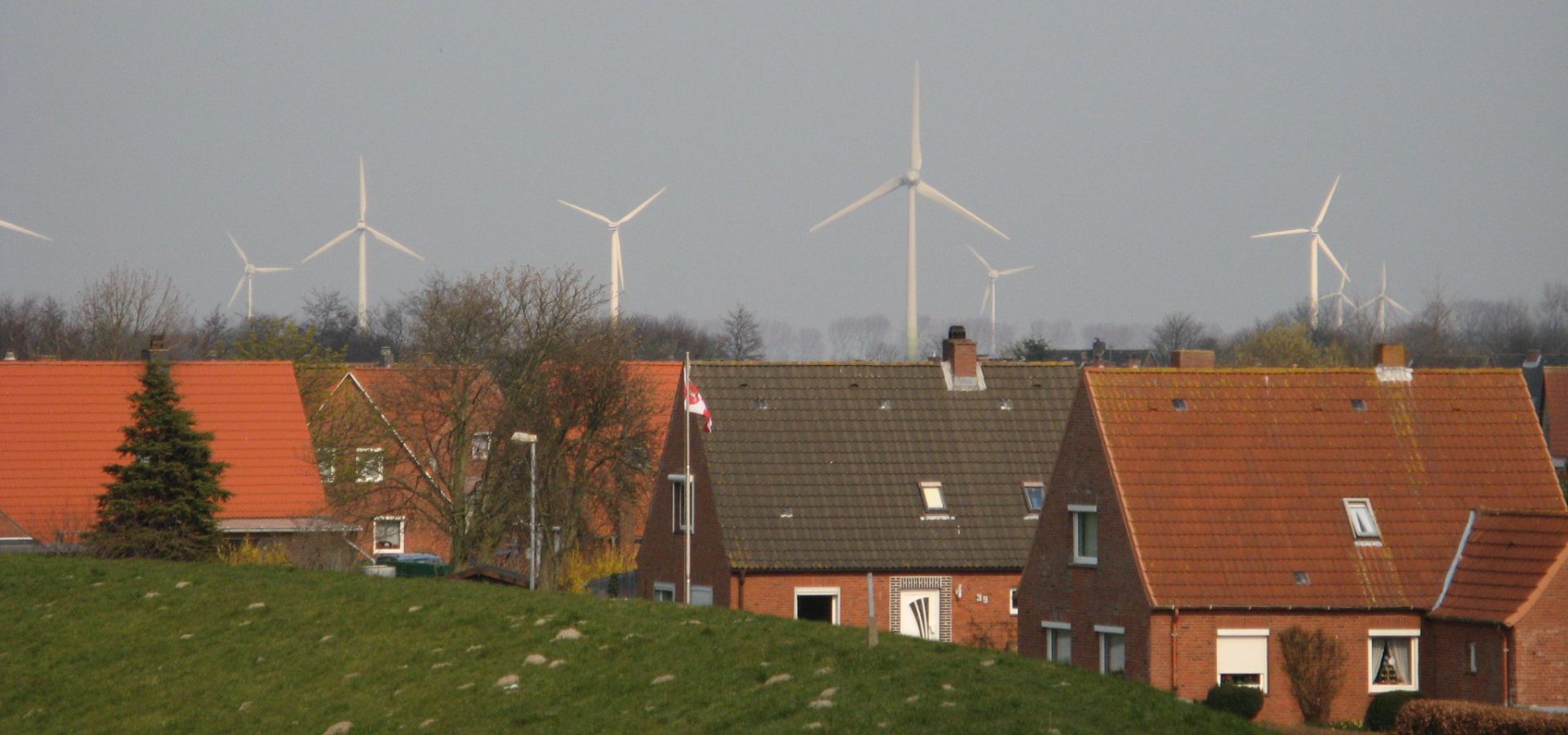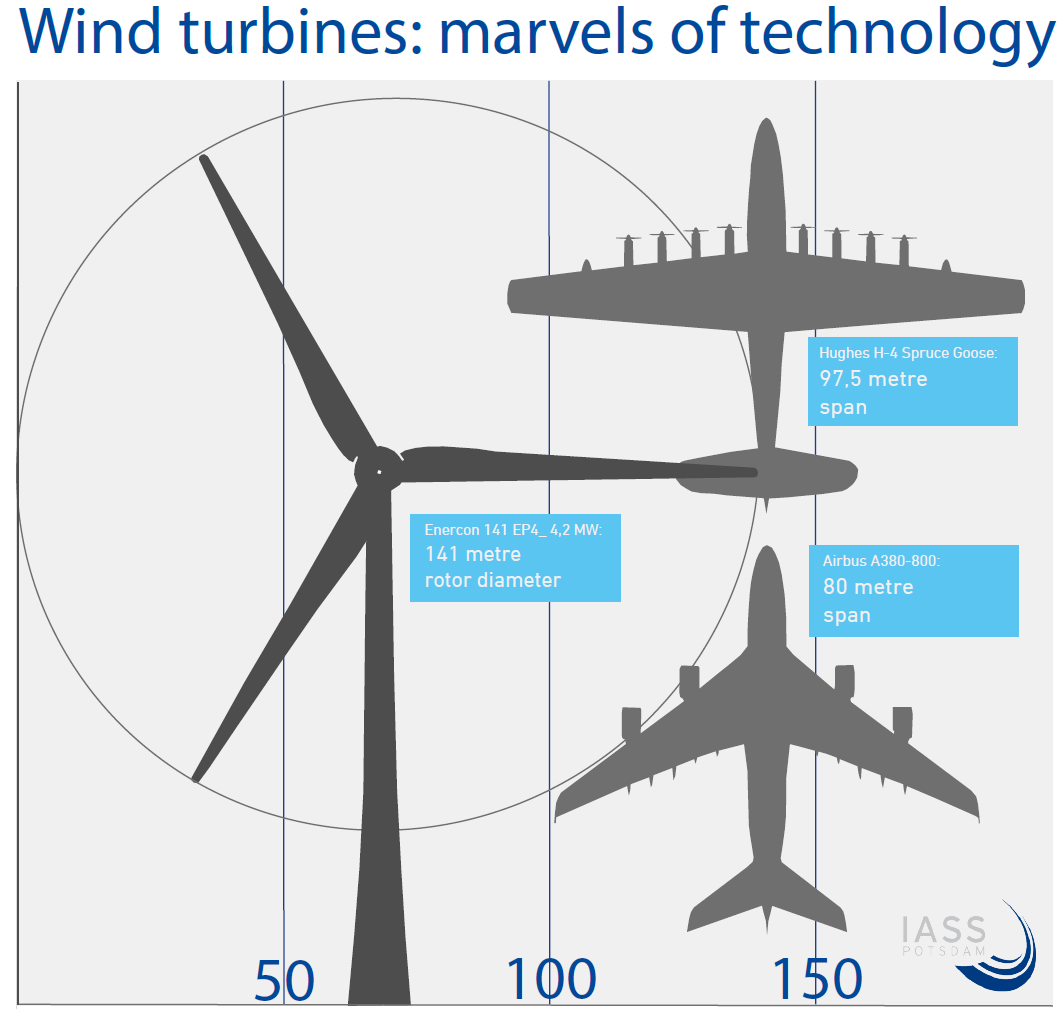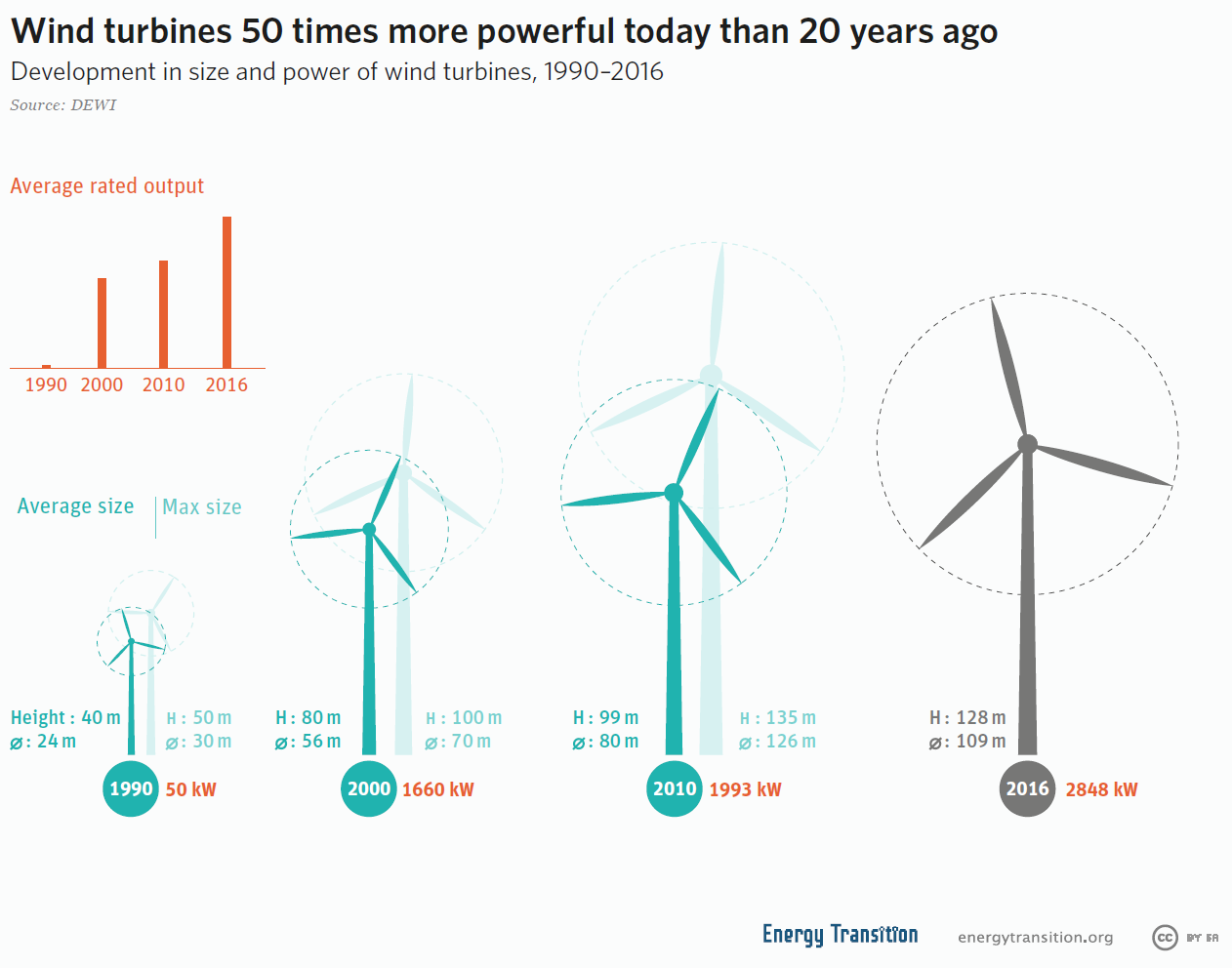When was the Energiewende born? Lots of dates are tossed around, but one German press report argues that it all started today 30 years ago, when a test wind farm was connected to the grid. Craig Morris says it’s as good a starting point as any for Germany’s energy transition, but the project really launched the global wind power sector.

The global wind sector’s humble beginnings – small municipalities on the German coast (Photo by Southgeist, edited, CC BY-SA 3.0)
In 2015, Germany’s Öko-Institut announced that the Energiewende had turned 35. Two years later, we read that it is now 30 (in German). It seems, to paraphrase a famous saying, that reports of the Energiewende’s birth are greatly exaggerated.

Rotor blades for wind turbines already in serial production are already far longer than any airplane wing ever constructed. Source: IASS.
Öko-Institut published the book entitled “Energiewende” in 1980, thereby coining the term. Others claim Germany’s energy transition was born in 2000 with the Renewable Energy Act or perhaps in 1991 with its predecessor, the Feed-in Act. But 1987 is a really good candidate as well.
Up to then, most funding for wind turbines came in the form of R&D. Loads of cash was given to top engineers – from America’s Boeing to Germany’s MAN. And none of those systems ever worked.
At Kaiser Wilhelm Koog, a rural community at the mouth of the Elbe River just west of Hamburg, Germany’s best minds had attempted to build a two-blade 3 MW turbine from scratch in 1983. It failed, and not just because the engineers had scaled up too quickly (no working turbine anywhere close to that size had ever been built). Rather, the utility firms involved wanted the project to fail, so they sabotaged it. “We need [that turbine] to prove that wind power won’t work,” an executive at RWE stated at a board meeting in 1982 (the minutes were later leaked). With R&D funding, firms got their money anyway.
The wind sector was still a fledgling in the 80s. But lots of citizens were building their own. In 1984, a survey taken by government officials revealed that 450 to 500 small wind turbines had already been built by 1982, and a later study revealed that do-it-yourselfers had put up 58 percent of them. The researchers found that most of the concepts were not good, but 59 percent of the owners said they were happy with their products, which were mainly used to provide heat; almost none of the turbines were connected to the grid.
So after pure R&D funding failed, the Christian Democrat government in Schleswig-Holstein decided to try a different tactic. To get a better idea of all of the products out there, a 1 MW wind farm consisting of various models would be built in Kaiser Wilhelm Koog – near the 3 MW failed R&D turbine that was being taken down at the time.
Most of the turbines at the new project were made by MAN, but lots also came from small and midsize firms: 20 Aeromans (each 30 kW), five 55 kW units from Enercon, and five 25 kW ElektrOmats. The project was connected to the grid on 24 August 1987. Instead of RWE, a giant utility with coal and nuclear assets, the utility that investigated grid integration was a local one more interested in helping regional entrepreneurs innovate: Schleswag.
The project showed not only that a significant volume of wind turbines could be connected to the grid safely, but also which units performed best. And it showed that deployment incentives were needed – not research. Entrepreneurial risk would be crucial for successful further development. Three years later, in 1990, the German government implemented the first feed-in tariffs, which became law nationwide in 1991. FITs provide that incentive for entrepreneurs.

The result was gradual growth in generator size based on success with smaller units. The average turbine installed on shore today in Germany is around 3 MW, the size of the failed two-blade R&D unit from 1983. The comparison also showed that three-blade turbines performed best.
Today, all of our turbines are based on winning designs from that test wind farm and other similar ones. We owe all of this to startups. GE and Siemens, for instance, were not even in the wind sector during those crucial years. They entered by buying up startups in 1997 and 2004, respectively. This history suggests that we cannot rely on our biggest engineering firms for innovation.
What’s more, the Kaiser Wilhelm Koog wind projects inspired neighboring communities to build their own wind farms. With revenue from feed-in tariffs, 33 citizens from nearby Lübke Koog decided in 1991 to build their own project. They mortgaged their homes and farms to leverage 2.3 million marks in equity for 22 Enercon units with 300 kW. By the time the bank loan was ready, Enercon had already launched its 500 kW E-40, the first major model without a gearbox (direct drive), so they installed them instead.
And the rest is history.
Craig Morris (@PPchef) is the lead author of Global Energy Transition. He is co-author of Energy Democracy, the first history of Germany’s Energiewende, and is currently Senior Fellow at the IASS.
Didn’t Denmark play a role too? I’m always suspicious of “innovation in one country” stories.
Yes, Denmark did definitely play a role. When I was on summer vacation with my parents in Denmark in 1978, we visited the Tvind generator (http://tvindkraft.dk) which had just started running a couple of months before, well before Growian (the failed project on Kaiser-Wilhelm-Koog mentioned in the article). Even if the “Energiewende” hadn’t started yet in Germany, this project did definitely have the spirit.
One aim was to demonstrate an alternative to nuclear energy. Folks at the time were opposing the nuclear plant in Barsebäck (in Sweden, but very close to Denmark), which started production during that time. They argued that 750 turbines like this one would generate the same amount of electricity as the Barsebäck plant, but would only cost half as much money to build.
In 1978, we took a brochure with photographs and documentation of the construction process. In retrospect, the most ironic part of the brochure is at the end, where they collected the refusal letters that they received in response to their application for funding. One development fund answered that any follow-up on their application for funding would be a waste of time since it was very unlikely that their development could ever lead to a profitable activity for Danish industry.